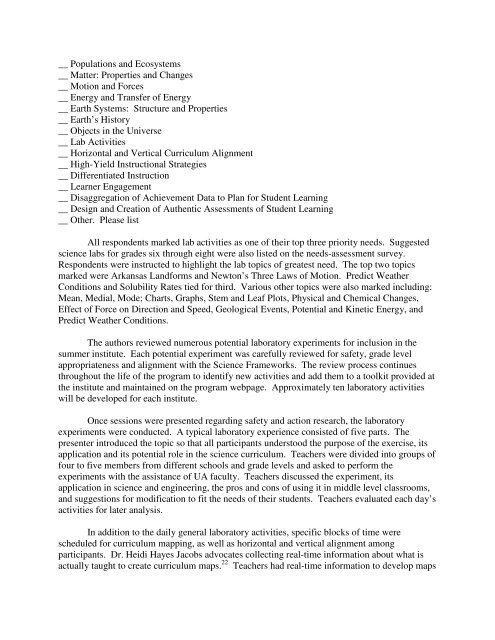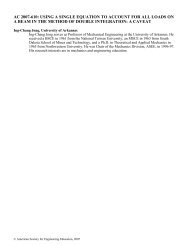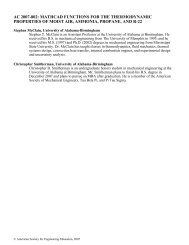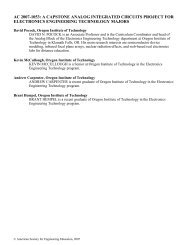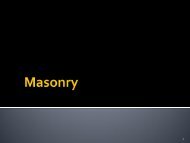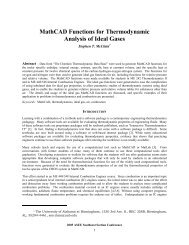AC 2007-514: UNIVERSITY OF ARKANSAS SCIENCE ...
AC 2007-514: UNIVERSITY OF ARKANSAS SCIENCE ...
AC 2007-514: UNIVERSITY OF ARKANSAS SCIENCE ...
You also want an ePaper? Increase the reach of your titles
YUMPU automatically turns print PDFs into web optimized ePapers that Google loves.
__ Populations and Ecosystems<br />
__ Matter: Properties and Changes<br />
__ Motion and Forces<br />
__ Energy and Transfer of Energy<br />
__ Earth Systems: Structure and Properties<br />
__ Earth’s History<br />
__ Objects in the Universe<br />
__ Lab Activities<br />
__ Horizontal and Vertical Curriculum Alignment<br />
__ High-Yield Instructional Strategies<br />
__ Differentiated Instruction<br />
__ Learner Engagement<br />
__ Disaggregation of Achievement Data to Plan for Student Learning<br />
__ Design and Creation of Authentic Assessments of Student Learning<br />
__ Other. Please list<br />
All respondents marked lab activities as one of their top three priority needs. Suggested<br />
science labs for grades six through eight were also listed on the needs-assessment survey.<br />
Respondents were instructed to highlight the lab topics of greatest need. The top two topics<br />
marked were Arkansas Landforms and Newton’s Three Laws of Motion. Predict Weather<br />
Conditions and Solubility Rates tied for third. Various other topics were also marked including:<br />
Mean, Medial, Mode; Charts, Graphs, Stem and Leaf Plots, Physical and Chemical Changes,<br />
Effect of Force on Direction and Speed, Geological Events, Potential and Kinetic Energy, and<br />
Predict Weather Conditions.<br />
The authors reviewed numerous potential laboratory experiments for inclusion in the<br />
summer institute. Each potential experiment was carefully reviewed for safety, grade level<br />
appropriateness and alignment with the Science Frameworks. The review process continues<br />
throughout the life of the program to identify new activities and add them to a toolkit provided at<br />
the institute and maintained on the program webpage. Approximately ten laboratory activities<br />
will be developed for each institute.<br />
Once sessions were presented regarding safety and action research, the laboratory<br />
experiments were conducted. A typical laboratory experience consisted of five parts. The<br />
presenter introduced the topic so that all participants understood the purpose of the exercise, its<br />
application and its potential role in the science curriculum. Teachers were divided into groups of<br />
four to five members from different schools and grade levels and asked to perform the<br />
experiments with the assistance of UA faculty. Teachers discussed the experiment, its<br />
application in science and engineering, the pros and cons of using it in middle level classrooms,<br />
and suggestions for modification to fit the needs of their students. Teachers evaluated each day’s<br />
activities for later analysis.<br />
In addition to the daily general laboratory activities, specific blocks of time were<br />
scheduled for curriculum mapping, as well as horizontal and vertical alignment among<br />
participants. Dr. Heidi Hayes Jacobs advocates collecting real-time information about what is<br />
actually taught to create curriculum maps. 22 Teachers had real-time information to develop maps


